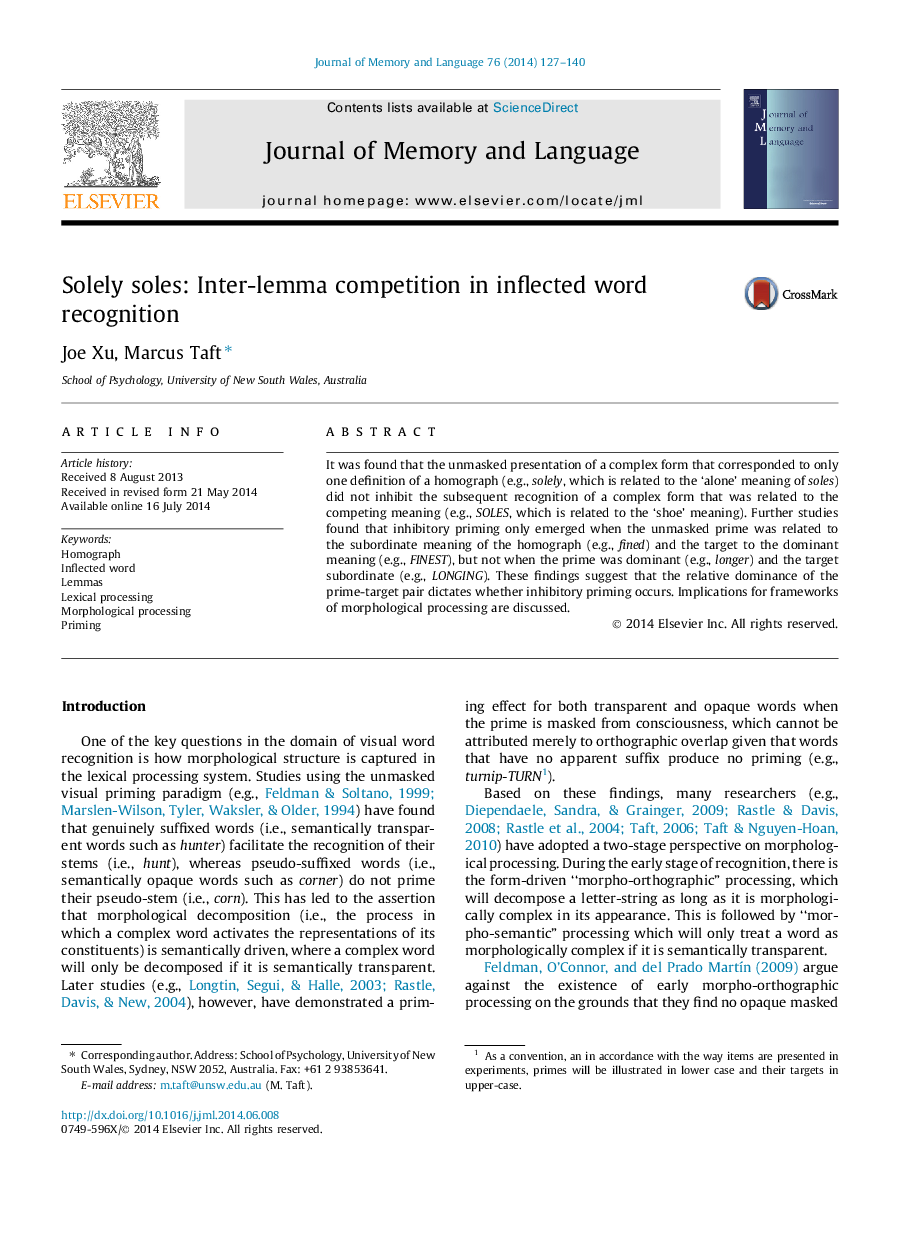| Article ID | Journal | Published Year | Pages | File Type |
|---|---|---|---|---|
| 931818 | Journal of Memory and Language | 2014 | 14 Pages |
•Unmasked priming between incompatible and compatible homographic stems is examined.•Only subordinate primes inhibit lexical decisions to incompatible homographic targets.•Compatible homographic targets are always facilitated.•The results support a model that incorporates inter-lemma competition.
It was found that the unmasked presentation of a complex form that corresponded to only one definition of a homograph (e.g., solely, which is related to the ‘alone’ meaning of soles) did not inhibit the subsequent recognition of a complex form that was related to the competing meaning (e.g., SOLES, which is related to the ‘shoe’ meaning). Further studies found that inhibitory priming only emerged when the unmasked prime was related to the subordinate meaning of the homograph (e.g., fined) and the target to the dominant meaning (e.g., FINEST), but not when the prime was dominant (e.g., longer) and the target subordinate (e.g., LONGING). These findings suggest that the relative dominance of the prime-target pair dictates whether inhibitory priming occurs. Implications for frameworks of morphological processing are discussed.
